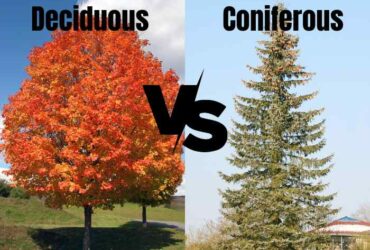In the late winter months, temperatures begin to warm up, making it the perfect time to celebrate spring. These days are also ideal for planning summer flower and vegetable gardens. Preparing the soil before starting any gardening projects may be a good idea. It may be beneficial to till or cultivate your garden soil to loosen and enrich compacted, nutrient-deficient soil. When the soil starts to dry out after the winter, this is the time to perform the work. So what should you be doing in this case? You can use a weeding cultivator or maybe a tiller. But do you know what is the difference between a cultivator and a tiller?
Cultivator vs tiller? Gardeners often use these terms interchangeably despite being two completely different tools. Even though they look similar, there is no interchangeability between tillers and cultivators. This article will be a walkthrough for deciding whether to choose a tiller or cultivators.
Tillers- An Overview
Several types of tillers exist, but a tiller is a much more powerful cultivator and is best for breaking up more problematic soils, like compacted, hard, and rocky soils. A tiller used for light-duty cultivation is often referred to as a cultivator, but the two terms are interchangeable. You can easily use a tiller for weeds. There are many reasons to compare cultivator vs tiller.
Different Types of Tillers
Because tillers require more work than cultivators, they are usually powered by gasoline because of their large engines. Tillers can be divided into two main types.
Front-Tine
It is easier to manoeuvre around trees and shrubs with the wheels positioned behind the tines. Small- to medium-sized yards can benefit from these as they are suitable for compacted soils that are not completely solid. The weight, bulk, and storage difficulty of tillers with rear tines are greater.
Mid-Tine
Located near the middle of the tiller, the tines are located near the engine. Physical strength is not required when operating these tillers, as they run like front-tine tillers.
Rear-Tine
Because the tines are set behind the wheels, they are the most powerful tillers for yard work. Due to the tines’ rotation against the tiller’s motion, rotating tine tillers can dig deeply into the soil.
Pros and Cons of Tillers

Cultivator vs tiller
There are several advantages of the tiller over cultivators.
- Tines can penetrate the soil deeper than cultivating blades. The soil is turned over, and weed roots are torn apart.
- Tillers cover more ground in less time than cultivators.
- There are many types of blades available for tillers.
- The weight of tillers is much lower than that of cultivators.
However, tillers have some disadvantages that can make them unsuitable for specific tasks:
- You may find it challenging to use a tiler if you are not familiar with it. Incorrect use could damage your soil.
- When the soil is completely dry, it should only be tilled. A damaged tiller blade will result.
- Because there is no attachment to gather or move debris, rocks can dull the blades over time.
- You need more power from the tractor when you use a tiller instead of a cultivator.
- The cost of engine oil increases when there is no existing account with a local supplier.
- The soil should be loose for the tiller blades to move quickly. It takes longer to work on compacted soil.
- The machine must be used carefully and without error since improper use can damage the soil or kill your plants.
- The speed of small spaces makes working in them dangerous.
Cultivator- An Overview
This automatic gardening tool has an apparatus that looks like a rake. The device is smaller than a tiller, so it is more suitable for smaller tasks like pulling weeds. So this is the cultivator for weeds.
Rather than significant landscaping tasks, cultivators are typically used to maintain lawns.
Different Types of Cultivators
According to its engine, cultivators can be classified into several types:
Gas Powered
This is a reliable, affordable, and robust machine, but it requires regular maintenance and refuelling. A cultivator of this type tends to be the most powerful in dense soils and larger yards.
Corded Electric
However, it is inexpensive to run and lightweight, which makes it a hassle to deal with. To use an extension cord, you must have a large enough yard or purchase an extension cord. There is a difference in compactness between gas and electric models.
Cordless Electric
Because electric cultivators emit no fumes and are quieter than gas-powered cultivators, they are safer to operate.
It is necessary to pre-charge them before using them, so planning is necessary. A hand tiller is the most common option, though sometimes miscalled an electric tiller.
Pros and Cons of Cultivators

Cultivator vs tiller
Compared to tillers, cultivators offer many advantages:
- Their small size makes them great for tight spaces.
- Power requirements for cultivators are lower than those for tillers.
- An effort is made to remove plant matter from the soil and weed roots.
- A cultivator tends to be cheaper than a tiller in general.
There are, however, some disadvantages to using a cultivator:
- Their inability to penetrate deep into the soil prevents them from breaking up clods or separating weed roots. Cultivators are, therefore, only useful for light digging, not heavy work.
- Cultivators take longer to cover more ground than tillers because they move slower.
- The soil can easily be damaged if the cultivator is not used properly.
- Cultivating hard soil with a cultivator will be impossible since the blades bounce back.
- Cultivators cannot move backwards until they have lined up the target area.
Cultivator Vs Tiller: Difference
Tillers break up firm soil, while garden cultivators blend it. You must understand your reason for comparing cultivator vs tiller.
A tiller breaks up the soil by digging deep into the soil surface and clawing into it during the initial stages of bed preparation. After the growing season, the plant material will be incorporated into the soil. Cultivators are easier to use than tillers because of their size, weight, and power.
Lighter tasks are better suited for cultivators. Unlike Tillers, they do not dig aggressively or with as much power as they do. So now, use a tiller for weeds.
The primary purpose of their work is to cultivate the soil so that it can be planted. During cultivation, the cultivator breaks down soil clumps into fine particles and adds air to them.
The less aggressive nature of these products makes them ideal for final bed preparation.
Despite their similar appearances, there is a lot of confusion surrounding the terms ’tiller’ and ‘cultivator’. Despite this, their functions differ, and no one piece of equipment can perform another piece’s function.
Do cultivators work as tillers?
Cultivator vs tiller is a widely asked question that has been quite nicely answered. Using cultivators, small spaces can be cultivated. Tillers would not be ideal in these situations since they are difficult to control and manoeuvre in confined spaces. The tines on cultivators are not heavy enough to loosen hard soil, making them unsuitable for a new garden plot.
You shouldn’t necessarily use a tiller instead of a cultivator even though they are more powerful. When using a tiller, more dirt may be released than anticipated. It is possible that you will not get the mixture of soil you had in mind. So now, if anyone asks you to give a comparison between cultivator vs tiller, it would be quite easy for you to do it.
For more amazing guides and tips, follow kitchen and gardening!














Leave a Reply